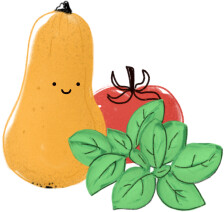Malini Fresco

Variety
Malini Fresco
Approved Data
created by steffen a. at 20.09.2022
Features
Location
Beet
Kübel
Resistenzen
Mehltau-resistent
Schorf-resistent
Color
rot
Season Overview
Planting
Harvest
Harvest
J
F
M
A
M
J
J
A
S
O
N
D
1ST YEAR
FOLLOWING YEARS
Description
Lubera has bred the first columnar apple trees that are resistant to scab and are therefore easier to cultivate in the home garden, on terraces and balconies. Good tasting, varieties with different flavors. Scab-resistant, easy to cultivate without fungal control. Fruitful, large harvest in a minimum of space Also a beautiful ornamental plant, ideal for container cultivation. Ready to eat from Nov. to Feb. It should be stored for a while after harvesting. The taste is tart and refreshing, the flesh is beautifully white, firm and juicy.
F1 Hybrid
Frostproof
Growing tips
Apple blossoms only tolerate frost down to -1°C, so the location of the apple tree should not be at risk of late frost. Apple trees like deep, humus-rich soil that is not too cold or wet. Diseases then develop more easily. In terms of varieties, there are some differences as to which conditions are best. A second apple tree can be helpful for pollination, as apple trees do not pollinate themselves. To plant a root-free apple tree, dig a hole twice the size of the root ball and do not plant the apple tree deeper in the soil than before. Compost fertilization is recommended when planting. Shake the tree a little to distribute the soil between the roots. After filling up, press the soil down firmly and water well. In addition, shorten the top and side shoots by no more than half and tie the tree to a stake. Apple trees should be well fertilized once in March and supplemented with infusions in summer. If the apple tree has a very large crop of fruit one year, it should be thinned out a little, otherwise it will only bear sparsely the following year. The crown of the apple tree should remain light, so prune inward-growing shoots in winter. To shorten overhanging branches with too many fruits, you should choose August. Nesting aids and food plants for insects can help to ensure a richer harvest. Apples can be harvested as soon as they have reached their typical color and come off the tree easily. Stored varieties should be harvested a little earlier. Liming for the winter can provide frost protection and protect against pests. The large, black seeds found in the fruit are suitable for propagation. The fruits are available in specialist fruit stores and sometimes also in supermarkets. Use sandy, lean soil and bury the seeds at a depth of approx. 2 cm. Germination takes place at 20-25°C, usually within 3 weeks. However, it can also take up to six months for them to germinate. Pests include the codling moth and the apple web moth. Diseases also include apple scab. Collect fallen leaves in the fall and dispose of them in the organic waste garbage can.
Details
Light requirement
Sunny
Water requirement
Moist
Soil
Medium (loamy)
Nutrient requirement
Medium
Plant distance
80 cm
Row spacing
80 cm
Seeding depth
1 cm
Companion Plants
Antagonistic Plants
No antagonistic plants
Diseases
Powdery mildews
Pests
Schildläuse
Caterpillars
Aphids